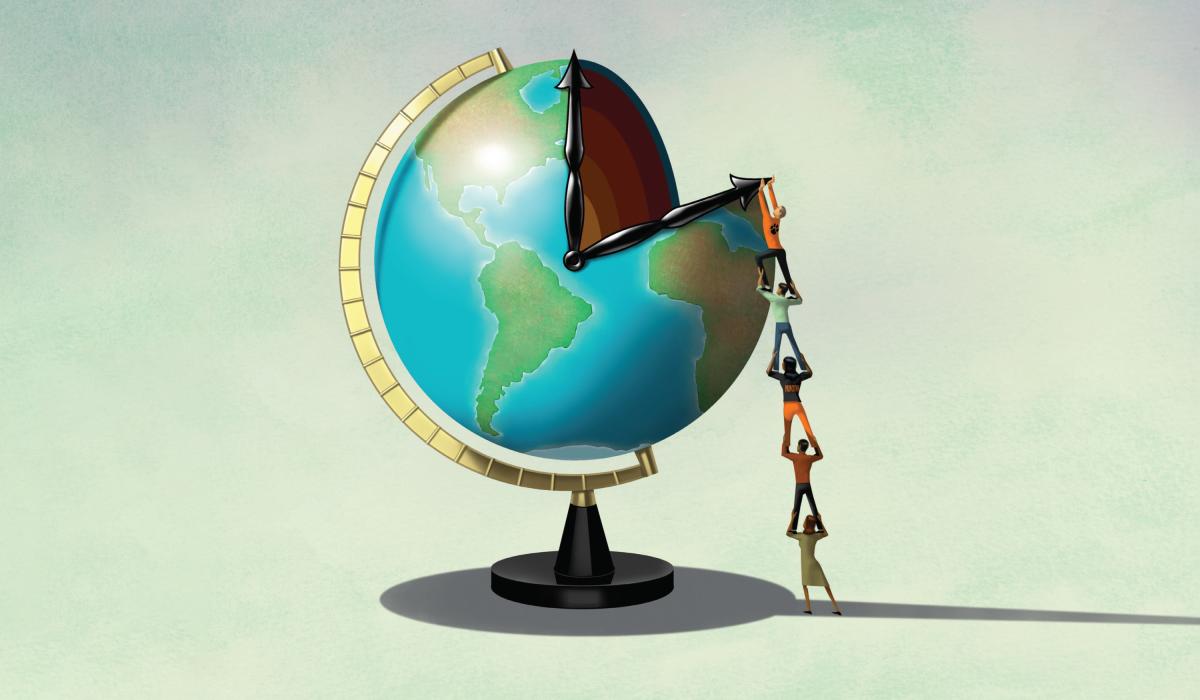Inevitably, when I tell people I work as a climate reporter, they say, “That must be so depressing.”
It can certainly seem that way. After all, the most common story told about climate change over the past 40 years has gone something like this: Greenhouse gas emissions are rising. Droughts, heat waves, species extinctions, and deluges are around the corner. We are missing our opportunities to act.
This story compelled me when I first came to Princeton in 2013. Initially attuned to space, science fiction, and STEM, I had set my sights on studying astrophysics. But in my first semester or two I was taken with the University’s unofficial motto — then “in the nation’s service and in the service of all nations” — and felt a sense of responsibility to do something about what I saw as the greatest issue of our time.
So I threw myself into the study of climate change. With the help of a few supportive professors, I managed to get approval for an independent major that focused almost entirely on global warming and the environment. (Princeton didn’t then — and still doesn’t now! — have a major in environmental studies or environmental sciences.)
As I learned about renewable energy and paleoclimates and carbon taxes, I began to feel that the common climate story was wrong. Yes, climate change is a slowly unfolding disaster, one that we have waited far too long to solve. But it is also an opportunity: A chance to turn an economy grounded in burning fossil fuels into one based on cleaner sources of energy — sources that don’t give children asthma or the elderly heart disease. A chance to reassess the inequalities between countries in the north and south, between rich and poor.
Slowly, I grew interested in new kinds of stories about the climate crisis, stories that didn’t hit the same “disaster” notes over and over. I began to write about climate solutions and the people trying to implement them.
Now, as a journalist at The Washington Post, I try to convince readers that, while climate change may be depressing, it is also one of the most interesting problems in the world. It requires creative scientific and engineering breakthroughs — everything from the development of low-carbon cement and ever-larger lithium-ion batteries to the study of how researchers can coax the oceans to absorb more carbon dioxide. It is a problem that, by its very definition, will require the entire world to solve — from diplomats to electricians to corporate sustainability officers to activists to novelists.

Princeton has been a part of this story. The University is trying to use its campus as a form of live-in lab, aiming for net-zero emissions by 2046 with the help of solar, wind, and ground-source heat pump technologies. It is establishing a new home for environmental studies and environmental science on campus to knit together related subject areas. It is my hope that Princeton will eventually create a full department to give interested students an academic track on campus.
Until recently, however, the University’s actions in these areas were often overshadowed by the approximately $1.7 billion invested in fossil fuels. After diligent efforts by alumni and student activists, last year Princeton announced it would divest from publicly traded fossil-fuel companies and dissociate — or cut financial ties — with 90 companies involved in some of the dirtiest forms of fossil fuel extraction. (Student and alumni activists argue that these steps do not go far enough, and that the University should divest and refuse research funding from all fossil fuel companies.)
But Princeton’s true strength in the fight against climate is its alumni, researchers, and professors. In the course of my reporting, I’ve talked to Princetonians who are digging ice cores in the Arctic, tracking the effectiveness of climate protests around the world, and developing comprehensive climate models that have helped to pass landmark laws. In this magazine issue alone, there are Princetonians developing fusion, diving into the environmental humanities, and negotiating from the halls of the State Department.
All these energetic efforts can’t, of course, blot out the scale of the problem. In 1992, the year that the United Nations first met to discuss the problem of global warming, humans were emitting about 22 billion tons of carbon dioxide every year. Last year, we emitted close to 37 billion tons. Sixty percent of all greenhouse gas emissions ever produced by humanity were sent into the atmosphere in just the past 40 years or so. The most amibtious goal of limiting warming to 1.5 degrees Celsius — enshrined in the landmark 2015 Paris Agreement — is now virtually impossible to achieve.
At the same time, miraculous things are happening around the world. The United States has passed a gigantic, $370 billion climate bill; the European Union is preparing similar efforts in response. In the past decade, the cost of solar energy and lithium-ion batteries has plummeted, as public understanding and belief in climate change has grown. As Elizabeth Kolbert wrote recently in The New Yorker: “To say that amazing work is being done to combat climate change and to say that almost no progress has been made is not a contradiction; it’s a simple statement of fact.”
I can’t tell anyone else whether they should be depressed or not about climate change. But I do know that every day I wake up, go into the office, and call some of the smartest, most dedicated people in the world — who are trying to tackle the warming planet in any way they can. Many of them are represented in these pages. I hope they inspire you, too.




